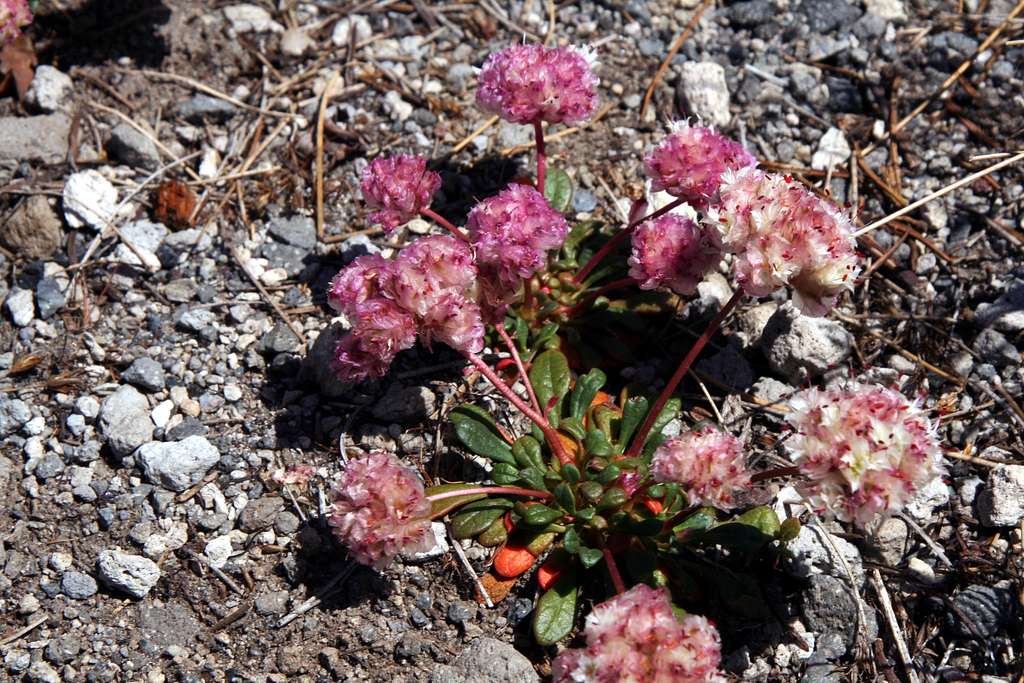oldandslow - Aug 14, 2010 3:12 pm - Voted 10/10
Dirty SocksThis flower is known as dirty socks, suposedly because it smells like dirty sweat socks. The color ranges from white to red. It is a member of the buckwheat family.
nartreb - Aug 16, 2010 7:55 pm - Hasn't voted
Re: Dirty SocksThanks. I'm convinced it's an Eriogonum (buckwheat), but the leaves don't look quite right for Pyrolifolium (dirty socks) to me. Doesn't look like Ovalifolium either. Two hundred fifty more species to check...
oldandslow - Aug 16, 2010 8:47 pm - Voted 10/10
Re: Dirty SocksI claim no expertese. Last Thursday my son and I hiked from Timberline Lodge to Zig Zag Canyon and back and my son photographed some flowers that I was trying to identify. Although the leaves on his flowers were smooth like yours, I condluded they were dirty socks. One of my books--Wildflowers of the Pacific Northwest by Turner and Gustafson--states that dirty socks may have either hairy or smooth leaves so I'm not searching further.
oldandslow - Aug 25, 2010 2:06 pm - Voted 10/10
Purslane Family?I have migrated to my house in Central Oregon where I have another wildflower Book. On the page opposite dirty socks is Umbellate Pussypaws--spraguea umbellata. It looks very much like your flower. It grows on pumice flats around Sparks Lake which is the sort of landscape that exists around Moraine Lake.
nartreb - Aug 25, 2010 3:17 pm - Hasn't voted
Re: Purslane Family?Thanks! It does look more like pussypaws, specifically what I found online as Mt Hood Pussypaws - Cistanthe Umbellata. Looks like the genus was recently redefined - rather confusing. I even found a scan of an old book that listed S. umbellata in the ranunculales (buttercup order) rather than the caryophyllales (pink order).








Comments
Post a Comment